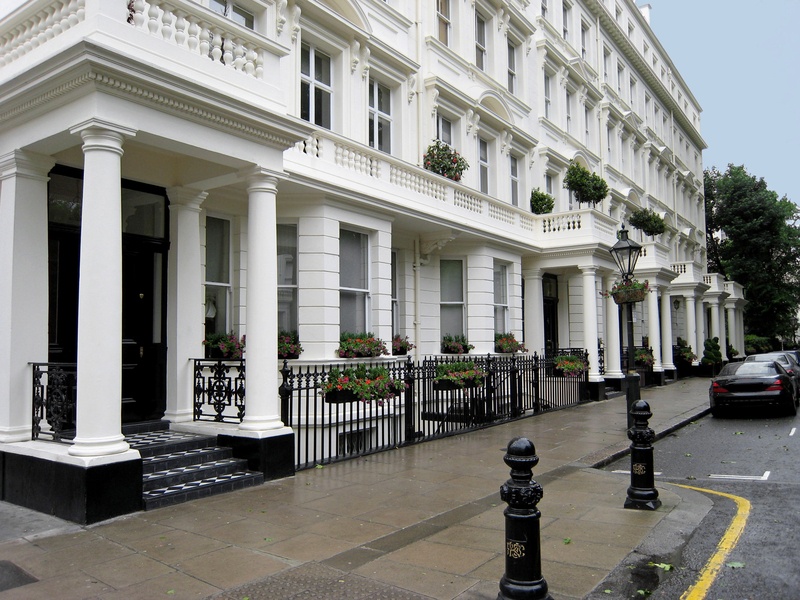Home » Uncategorised »
Prime Central London Prices and Sales Fall Again
This article is an external press release originally published on the Landlord News website, which has now been migrated to the Just Landlords blog.

House prices and sales in prime central London have fallen again over the past quarter, according to the latest Residential Index from investment advisory London Central Portfolio (LCP).
The report assesses the health of the property market in prime central London, Greater London, and England and Wales as a whole. The latest index covers June 2018.
Prime central London
The average house price in prime central London during June (excluding new builds) was £1,754,317. This is down by 8.2% on an annual basis and 6.9% on the previous quarter.
The number of transactions in prime central London in the year to June fell by 8.5%, to levels last seen during the Global Financial Crisis. These declines have been seen across the market, with new build sales dropping by 17.3%.
New build prices, however, have reached a record average high of £3,209,089, marking an almost 90% premium over existing stock in prime central London.
Naomi Heaton, the CEO of LCP, comments: “Prices in prime central London in June now stand at £1,754,317, a fall of 8.2% compared with this time last year. They are currently no higher than they were almost four years ago, in a market that has enjoyed annual average growth of 9.9% since 1996.

Prime Central London Prices and Sales Fall Again
“In December 2014, Graduated Stamp Duty was introduced, increasing the top rate for more expensive properties from 5% to 12%. Since then, there have been two general elections, a referendum and six further tax changes to the residential sector. This combination has lead to a significant readjustment in prices. It has also lead to transactions falling to the same level as seen in the Global Financial Crisis, and which now stand at 3,760. This is as few as 72 a week and has significant ramifications.
“Countrywide (the UK’s largest estate agent) issued a profit warning in June for their first-half earnings, leading to an almost 30% fall in share price. Listed house builders are also seeing falling share prices amongst concerns of a chaotic Brexit and an increase in property down-valuations. Whilst there was an increase in the proportion of higher value transactions in the first part of 2018, this surge appears to have dissipated. This has been reflected in the average price falling by 11.1% from a high of £1,973,140 in February.”
Greater London
Over the whole of Greater London, the average house price in June (excluding new builds) stood at £628,807, following an annual increase of just 0.6%.
Home sales in the year to June dropped by 8.0%, and remain just above the level seen during the Global Financial Crisis. These falls have been recorded across Greater London, with new build transactions decreasing by 12.6% over the same period.
New build house prices reached a record high of an average of £755,553 in June, representing a 26.4% premium over existing stock.
Heaton says: “Whilst there has been a rally in average prices in Greater London over the last quarter, with a record high of £628,807 achieved in June, annual prices have seen growth of just 0.5%. While these statistics do not reflect the discount from original asking price to sale price, a disconnect between seller and buyer expectations can be observed. This is undoubtedly a contributing factor to the sluggish level of transactions.
“Current annual sales have fallen 8% and now stand at 87,080, just above the levels last seen during the Global Financial Crisis. With current residential tax policies and the lack of a defined plan for a post-Brexit UK contributing to economic uncertainty, it appears that only those who have to move are doing so.
“Falling prices will only exacerbate this, as sellers are not motivated to move if they see the value of their home decline. Soft prices and a general trend towards down-valuing properties could also have a concerning impact on the Government’s Help to Buy scheme, which has enabled buyers to take a 95% loan. Existing owners may now find they are in negative equity when it comes to remortgaging their homes, with serious repercussions.”
England and Wales
The average house price in England and Wales (excluding new builds) was £287,558 in June. This represents a quarterly rise of just 0.5%, with annual growth standing at 0.8%.
Sales over the year to June fell by 3.2%, and are at their lowest level since the introduction of Graduated Stamp Duty in December 2014.
New build house prices are close to a record high of £343,244 at present, representing a 20.1% premium over existing housing stock in England and Wales.
Heaton gives her thoughts on the figures: “Whilst prices in England and Wales have picked up slightly in June, by 1.3% to £287,558, on an annual basis, prices have risen by just 0.8%. This very low level of growth is a common theme throughout prime central London and Greater London, as well.
“Annual transactions also remain supressed, falling a further 3.2%. They are at their lowest level since the introduction of Graduated Stamp Duty. This subdued activity is now starting to have a very tangible effect on the UK, both amongst house builders and estate agents. Currently, with the uncertainty created around Brexit, there does not appear to be anything significant on the horizon which will help buck this trend.
“Whilst increasing affordability through falling prices may benefit first time buyers and second steppers, it tends to have the counter effect of supressing sales activity. The Government is unlikely, and probably unable to, reverse the recent tax changes, given the political consequences. Therefore, it looks as though it will adopt a wait-and-see attitude for the time being, although the economic consequences of falling transactions and a reduced tax take are beginning hit home.”




